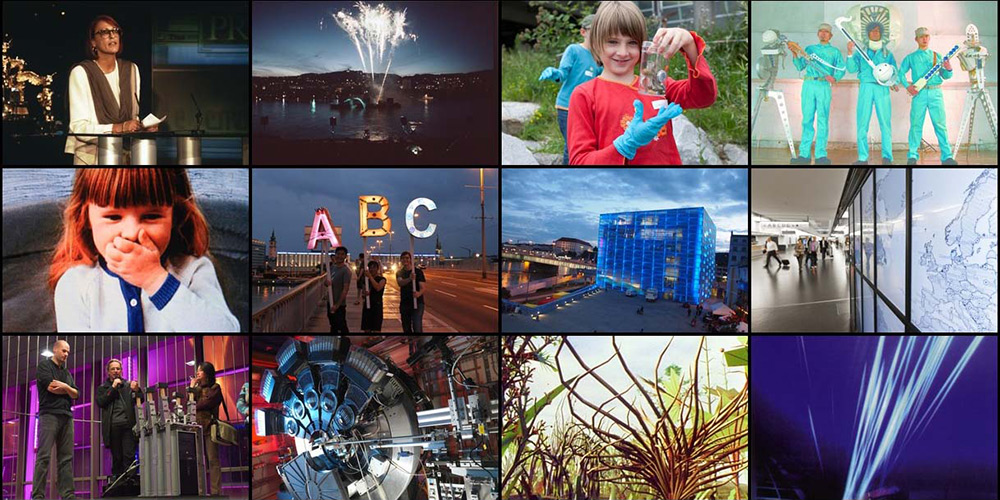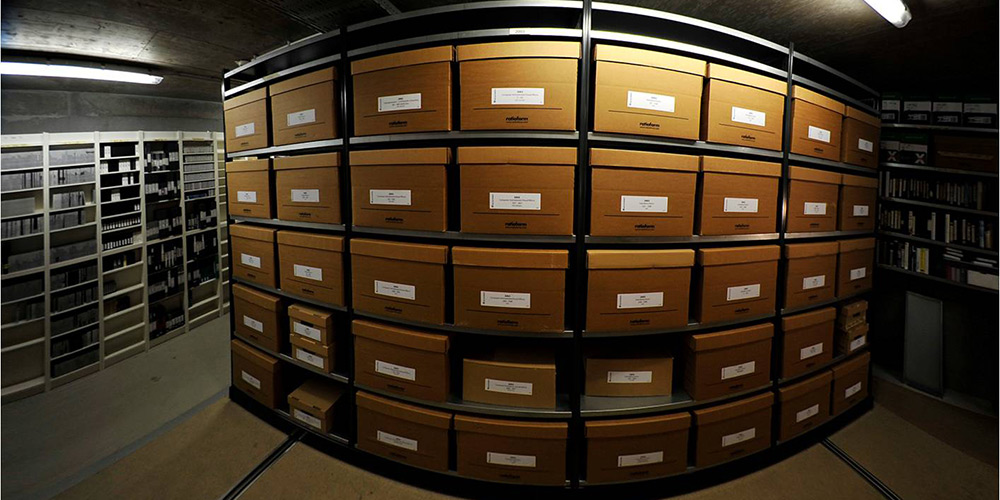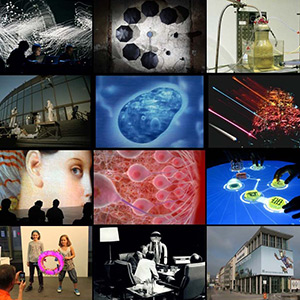
Credit: Ars Electronica Archive
“Talks & Lectures” is the title of the Ars Electronica Archive’s new video collection that’s now available online alongside its other holdings at the newly reconfigured website http://archive.aec.at. Users now have free access to a selection of speeches, discussions and presentations by men and women from all over the world who’ve taken part in past years’ Ars Electronica Festivals. This illustrious guest list includes Alexandre Vitkine, Otto Piene, Peter Weibel, John Sanborn, John Lasseter, Joichi Ito, Paul Virilio, Gerfried Stocker, Joachim Sauter, Christa Sommerer, Derrick deKerckhove, Thomas Macho, Oliviero Toscani, Richard Kriesche and Golan Levin. Curators were involved in selecting and compiling the video collection. Their personal highlights and recommendations are grouped under the heading “Curated Lectures.” Like in any well-designed archive, users can conduct customized searches by year, speaker or keywords.
One of the World’s Most Comprehensive Archives of its Kind
Publishing this material on the internet is the outcome of years of preparatory work at the Ars Electronica Archive. The project staff is headed by Martina Hechenberger: “We’re so fortunate to have video recordings going back to the very beginnings of the Festival 35 years ago. Unfortunately, it’s also the case that we don’t have comprehensive or high-quality documentation of every festival since its inception.” But steps have already been taken to prevent this from recurring. The “Talks and Lectures” project that’s been financed by the Austrian Federal Ministry of Education focuses not only on the online presentation of the material but also on conserving it, inventorying it and storing it in a sustainable way.
Ars Electronica’s holdings constitute one of the world’s most comprehensive archives of digital media art created over the past 35 years. The content is preserved in physical form in Linz. The reopening of the expanded and redesigned Ars Electronica Center in 2009 provided the Archive with its own air-conditioned facility containing more than 378 linear meters of space for the storage of approximately 60,000 physical pieces of documentary material and Prix submissions. In addition to thousands of video & audio media, they include many photographs, negatives and slides, as well as an extensive collection of printed material such as books, catalogs, magazines, pamphlets, newspapers and posters.

Credit: Ars Electronica Archive
Digitization to Secure Endangered Data
The Archive’s holdings are continuously growing, fed by Ars Electronica’s daily events and activities. The result is not only a representative cross-section of the broad field of media art and digital art, but also a longitudinal section of the historical storage media & formats that significantly shape the physical manifestation of these works. Material on all essential genres and topics in this field—computer graphics, computer animation, computer & digital music, interactive art, network art, software, mixed realities, media performances, bio art and robotics—documents both aesthetic strategies as well as the technical conditions that constitute the foundation of these artifacts. They are, moreover, not only of scholarly and historical interest; the short useful lives of their data storage media also make them an important area of activity for technical specialists. The videos in particular are stored on a vast array of formats, the life expectancies of which are limited; furthermore, electronic devices capable of playing them back are also steadily falling by the wayside.
Projects like these have made it possible in recent years to process and digitize a portion of the Archive’s holdings, so that the online archive now includes images, videos and texts about all Prix Ars Electronica prizewinners since 1987 (Prix Archive). The Prixmap is a visual depiction in the form of a world map of all those projects that have been submitted for prize consideration and singled out for recognition. The picture archive contains over 40,000 photographs documenting all of Ars Electronica’s divisions since 1987 (Pic Archive). Users can very conveniently browse and search through books (all Festival and Cyberarts catalogs, magazines (the Ars Electronica Center “update”) and many other publications (Print Archive). And the new “Talks & Lectures” video section makes available speeches, discussions and panels held at past Ars Electronica Festivals.

Credit: Ars Electronica Archive
Ars Electronica Archive: From Preservation to Research
“One of the most important aspects of the Archive’s mission is the conservation, digitization and long-term storage of the physical artifacts,” said Christina Radner, project manager on the Ars Electronica Archive staff. “An internal database with metadata serves the purpose of inventorying the physical objects and of archiving both the digital reproductions and the so-called digital-born materials. Automatic backups and a tape backup are essential elements of the long-term archiving strategy.” The Archive staff is working unremittingly to make more and more content available online and to facilitate access by researchers and scholars. Other points high up on the Archive’s agenda are conducting technical research on digitization standards and bringing to light new insights on long-term archiving.
You can browse through Ars Electronica’s online archive free-of-charge and conveniently from your own computer: http://archive.aec.at/. To learn more about the archive’s content, mission and activities, click on this link https://ars.electronica.art/about/en/archiv/.
